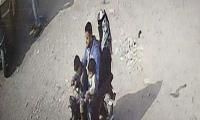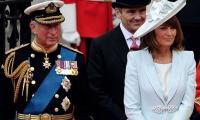The French electorate has produced a hung parliament, the French voters giving a split mandate to three main alliances.
The Left alliance came on top but is still not in a position to form the government. In fact, no party was able to win the simple majority of 289 seats to form the government. This will be a big test: how to form a majority and stable government. It will be hard for the both left and the liberal right to form a government with the help of the far-right National Rally.
President Macron had called for an early election after the humiliating defeat of his party and the victory of the National Rally in the European Parliament elections. The real contest in the snap parliamentary elections was between three blocks or alliances.
The Left alliance (New Popular Front) consists of four major parties: the Socialist Party, the Greens, the Communist Party and La France Insoumise. The liberal and right-wing alliance, Ensemble, included Macron’s Renaissance, the Democratic Movement, Horizons and the Radical Party while the far-right alliance National Rally consists of the National Rally, Republicans, the Reconquete Party and Lutte Ouvriere. The elections were held in two rounds on June 30 and July 7.
The turnout was 66.71per cent in the first round and 66.63 per cent in the second round — highest since 1997. The main reason for the high turnout is the political polarization in French society. The divide is clearly between the far-right and far-left. This polarization mobilized many more people to vote.
The left alliance, New Popular Front, beat all expectations and emerged as the largest block, performing better in the second round to surge ahead of the National Rally. The New Popular Front won 180 seats in the elections but fell short of the magic figure of 289 seats to form the government. The Left won 131 seats in the last election so this means a net gain of 49 seats. The Left’s share of popular votes slightly increased in the first round with 28.21per cent while in the second round it dropped 5.80 per cent compared to the last elections.
This result has provided much relief for the millions of workers and young people who were worried about the possible victory of the far-right. Young people and immigrant communities rallied behind the Left parties. This is the best result for the Left after many years.
If the Left is the real winner of this election then the Macron-led alliance is the real loser. The Macron-led Ensemble alliance won 159 seats. It had won 245 seats in the last election. It got 6.68 million votes in the first round while it secured 6.69 million votes in the second round. Its share of popular votes dropped to 21 per cent in the first round and 24 per cent in the second round. Its share of popular votes dropped almost 14 per cent compared to the last elections. The Republicans won 39 seats.
Only 66 candidates won their constituencies in the first round. It is mandatory for a candidate to secure 50 per cent votes in the first round to win the elections. So 511 seats went to the second round as no candidate in these constituencies succeeded to secure the 50 per cent threshold.
The far-right National Rally led by Le Pen and Jordan Bardella performed better than the other two alliances. It got the biggest share of popular votes in the first round with more than 33 per cent votes. Its share of popular votes even increased in the second round, nearly 37 per cent. It won 142 seats and emerged as the single largest party in parliament. This is the best result for the National Rally. In the last election it won 89 seats so the net gain is 53 seats.
The National Rally, however, failed to secure a majority — though it is still a potent force. Its share of popular vote is a worrying factor. Its march towards power has been stopped by the big mobilization of young voters for now but the danger still persists.
The only way to stop the march of the far-right is to change the socio-economic conditions in France. Many people are not happy with the economic situation. Neoliberal economic policies have made the traditional political parties unpopular. Racism has been on the rise in France. And no serious effort has been made by the French ruling elite to stop this. The rising unemployment, poverty and falling living standards have given rise to the far-right which places all the blame on immigrants.
The Left needs to come up with a radical economic programme to counter the far-right propaganda. It can mobilize millions of workers, young people and layers of the middle class on a genuinely Left radical programme to build public housing, to provide jobs and to improve the public services. The continued neoliberal onslaught and austerity has crippled public service and housing while inflation has outpaced wage rates. The economic situation is not improving for the working class.
The current circumstances and conditions have made France a perfect breeding ground for extreme ideas both on the right and the left. The Left needs unity and a radical economic programme to decisively defeat the danger of the far-right.
The writer is a freelance journalist.
China has emerged as a competitor to the US, ready to give a tough time to the US on every front
Few university leaders are dynamic enough to develop plan to generate additional revenue for their institutions
The representational image shows of chained freedom of expression. — APP/FilePakistan’s digital landscape is...
Justice Munir remains infamous for his contribution to doctrine of necessity
This system is prime example of inefficiency at every level of government, whether federal, provincial, and local
SBP’s reluctance to cut rates aggressively is often justified by fears of an import surge







